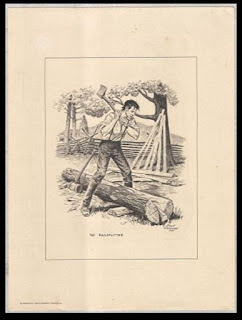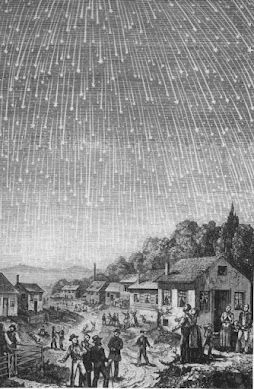Odd Facts: The accommodating Lincoln
 |
Abraham Lincoln Portrait by George Frederick Wright (1828-1881). |
"Lincoln's features were the despair of every artist who undertook his portrait. The writer [Nicolay refers to himself in the third person] saw nearly a dozen, one after another, soon after the first nomination to the presidency, attempt the task." [1]
Nicolay's line - underlined above - drew my attention. In the immediate aftermath of the election of 1860, Lincoln was faced with national and personal situations imploding and exploding all around him - states threatening to leave the Union, a cabinet to pick, an inauguration speech to write, and a family to move from Illinois to Washington. Amid this chaos, how in the world could Lincoln find the time sit for nearly a dozen artists?
Here's the story of a little remembered accommodation by a beleaguered president-elect for a group of artists and the result that today hangs at the University of Chicago.
After the election in November 1860, Lincoln was besieged by artists who wanted the president-elect to sit for a portrait. Although he didn't have the time to sit for all the those who requested an opportunity, Lincoln also knew that these people were just trying to make a living, and that even though he was president-elect, he was NOT a well-known entity outside the state of Illinois.
Because of his strong empathy, compassion, and his rigid sense of right and wrong, Lincoln came up with a way to accommodate them all. He let it be known that he would sit in the Old Legislative Hall in Springfield [IL] for a few hours every morning for a week or so for any and all artists who wanted to paint him.
Nicolay, in his article many years later, described the sessions.
"They put into their pictures the large rugged features, and strong prominent lines; they made measurements to obtain exact proportions; they "petrified" some single look, but the picture[s] remained hard and cold. Even before these paintings were finished it was plain to see that they were unsatisfactory to the artists themselves, and much more so to the intimate friends of the man . . ." [1]
George Fredrick Wright** was among the painters that participated in those free-for-all sessions.
Lincoln occasionally walked among the artists, and, despite Nicolay's claim of dissatisfaction by "the artists themselves, and . . . the intimate friends of the man", Lincoln found one portrait that he liked - Wright's. He purchased it as a gift for the state treasurer of Illinois and an old Springfield friend, William Butler.
Lincoln would sit for Wright two more times, but the second one was not finished until a year after his assassination.
Provenance
After Butler died, the Lincoln portrait subsequently passed to Butler's daughter, Salome, and then to William J. Butler, her nephew, before it was purchased by Edward W. Payne, a Springfield banker.
The portrait now hangs in the Special Collections Research Center at the University of Chicago Library.
Food for thought.
Mac


Comments
Post a Comment